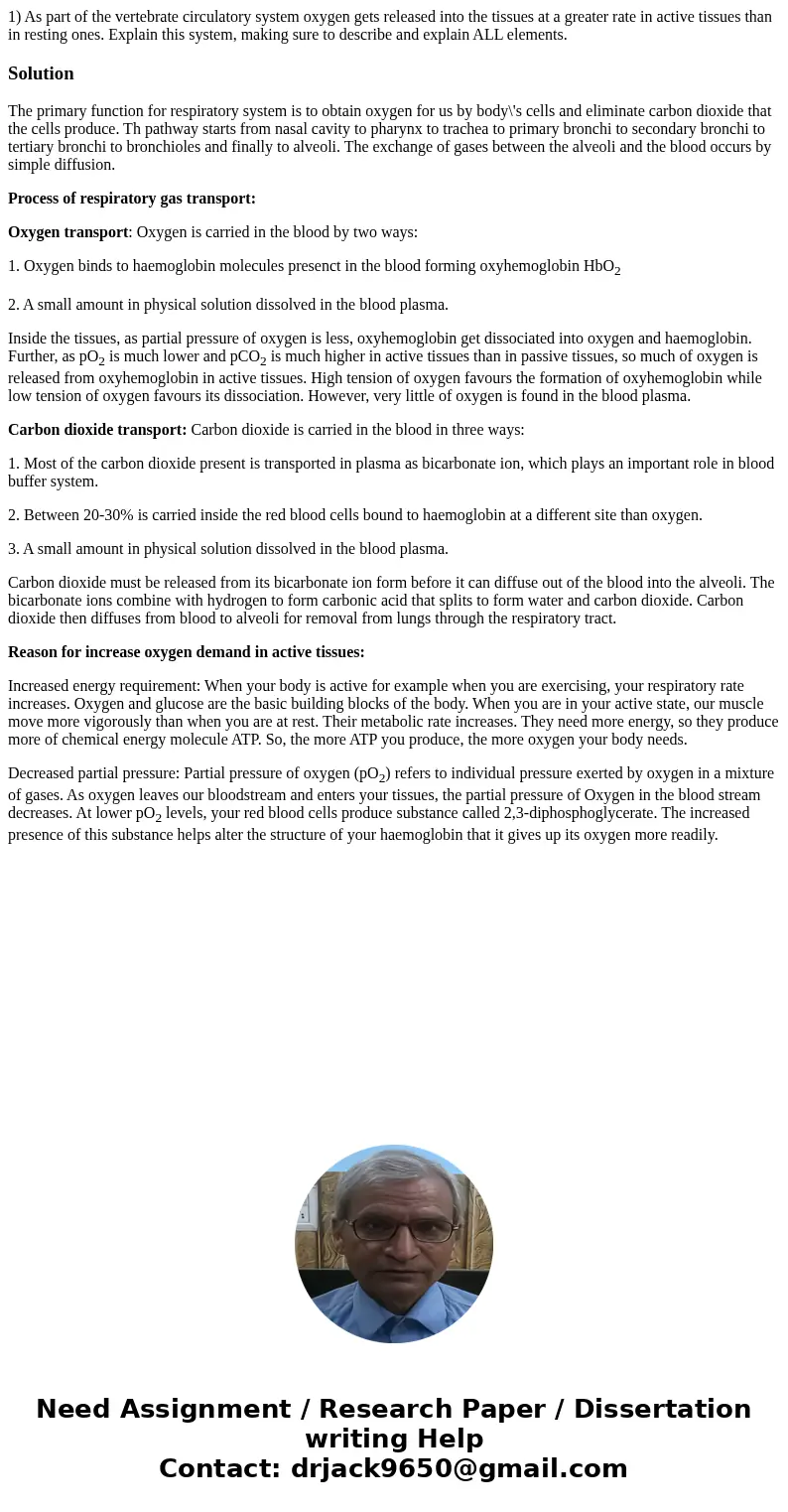1 As part of the vertebrate circulatory system oxygen gets r
1) As part of the vertebrate circulatory system oxygen gets released into the tissues at a greater rate in active tissues than in resting ones. Explain this system, making sure to describe and explain ALL elements.
Solution
The primary function for respiratory system is to obtain oxygen for us by body\'s cells and eliminate carbon dioxide that the cells produce. Th pathway starts from nasal cavity to pharynx to trachea to primary bronchi to secondary bronchi to tertiary bronchi to bronchioles and finally to alveoli. The exchange of gases between the alveoli and the blood occurs by simple diffusion.
Process of respiratory gas transport:
Oxygen transport: Oxygen is carried in the blood by two ways:
1. Oxygen binds to haemoglobin molecules presenct in the blood forming oxyhemoglobin HbO2
2. A small amount in physical solution dissolved in the blood plasma.
Inside the tissues, as partial pressure of oxygen is less, oxyhemoglobin get dissociated into oxygen and haemoglobin. Further, as pO2 is much lower and pCO2 is much higher in active tissues than in passive tissues, so much of oxygen is released from oxyhemoglobin in active tissues. High tension of oxygen favours the formation of oxyhemoglobin while low tension of oxygen favours its dissociation. However, very little of oxygen is found in the blood plasma.
Carbon dioxide transport: Carbon dioxide is carried in the blood in three ways:
1. Most of the carbon dioxide present is transported in plasma as bicarbonate ion, which plays an important role in blood buffer system.
2. Between 20-30% is carried inside the red blood cells bound to haemoglobin at a different site than oxygen.
3. A small amount in physical solution dissolved in the blood plasma.
Carbon dioxide must be released from its bicarbonate ion form before it can diffuse out of the blood into the alveoli. The bicarbonate ions combine with hydrogen to form carbonic acid that splits to form water and carbon dioxide. Carbon dioxide then diffuses from blood to alveoli for removal from lungs through the respiratory tract.
Reason for increase oxygen demand in active tissues:
Increased energy requirement: When your body is active for example when you are exercising, your respiratory rate increases. Oxygen and glucose are the basic building blocks of the body. When you are in your active state, our muscle move more vigorously than when you are at rest. Their metabolic rate increases. They need more energy, so they produce more of chemical energy molecule ATP. So, the more ATP you produce, the more oxygen your body needs.
Decreased partial pressure: Partial pressure of oxygen (pO2) refers to individual pressure exerted by oxygen in a mixture of gases. As oxygen leaves our bloodstream and enters your tissues, the partial pressure of Oxygen in the blood stream decreases. At lower pO2 levels, your red blood cells produce substance called 2,3-diphosphoglycerate. The increased presence of this substance helps alter the structure of your haemoglobin that it gives up its oxygen more readily.

 Homework Sourse
Homework Sourse